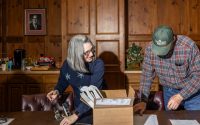Cal State Faculty Vote on a Contract This Week
The California State University system and the union representing thousands of professors and lecturers reached a tentative agreement last month to raise wages, ending the largest strike by university faculty members in U.S. history a few hours after it had begun. A ratification vote is being conducted this week.
Some faculty members voiced their displeasure with the deal soon after it was reached, saying that the leaders of the union, the California Faculty Association, which represents 29,000 professors, lecturers, librarians, counselors and coaches, could have secured better terms if they had not settled so quickly.
If it is ratified, the contract agreement would immediately increase salaries for all faculty members by 5 percent, retroactively to July 1, 2023, with another 5 percent raise scheduled for July 1, 2024, if the state does not cut funding for the university system. The salary floor for the lowest-paid faculty members would immediately rise by $3,000 a year, and paid parental leave would grow to 10 weeks from six.
A simple majority of votes is required to approve the contract. Voting began Monday and runs through Sunday; results are expected next week.
Union members from Bay Area campuses held a rally last month and formed an enormous “No” on the San Francisco State University campus to trumpet their disapproval.
“My belief is that we can get something better,” said Mark Allan Davis, a tenured professor of Africana studies at San Francisco State. He told me that he planned to vote against the contract.
The union and the university system each hailed the deal when it was announced. Antonio Gallo, the union’s associate vice president of lecturers for the state’s southern region, said the agreement “immensely improves working conditions for faculty and strengthens learning conditions for students.”
Mildred García, the Cal State chancellor, said that “the agreement enables the C.S.U. to fairly compensate its valued, world-class faculty while protecting the university system’s long-term financial sustainability.”
Unhappy union members point out that the California Faculty Association had been pressing for 12 percent raises, a full semester of parental leave and other additional benefits. And they note that the second 5 percent raise, promised for the summer, is not guaranteed; it depends on the state’s not reducing base funding for the university system this year, a significant threat given California’s budget deficit.
Angelina Moles, 30, currently makes $65,000 a year as a lecturer in the communications department at San Francisco State. She teaches at two other Bay Area universities as well, and models on the side, to make ends meet in pricey San Francisco.
At a recent protest, she held a sign noting that the chancellor’s annual housing stipend alone was tens of thousands of dollars more than her yearly salary.
“This 5 percent increase will do absolutely nothing for me in terms of my ability to pay my rent and live a safe life within San Francisco,” said Moles, who plans to vote against the deal. If the deal is rejected, the union and the university system would return to the bargaining table.
In a statement, Loren Cannon, a lecturer at Cal Poly Humboldt and a member of the union’s bargaining team, acknowledged that some faculty members were disappointed. But he added: “When we have conversations with faculty about the details of the tentative agreement, it seems that many support it. They recognize the movement from C.S.U. management that we achieved through our December and January strikes and other solidarity and collective actions.”
Harry Katz, a professor of collective bargaining at the School of Industrial and Labor Relations at Cornell University, told LAist this week that the raises included in the tentative deal were “not a horrible increase,” given Cal State’s financial pressures.
And disagreement among union members “doesn’t meant that collective bargaining has failed,” he told the news outlet. “That’s just a natural part of the process.”
And before you go, some good news
Staff members at the California Science Center in Los Angeles stepped back and breathed a sigh of relief just after midnight on Jan. 31. After almost 14 hours of work, the team had successfully installed Endeavour, a 178,000-pound space shuttle, in its new home at the science center. It is the first shuttle to be displayed at a museum in launch position, standing upright with its nose pointing to the stars, according to the center.
Transporting and installing the shuttle at the site of what will become the Samuel Oschin Air and Space Center, the latest expansion to the science center, was a two-day process.
Late on Jan. 29, hundreds of eager onlookers watched as the orbiter was hoisted into the sky with a 450-foot crane and attached to its giant external tank at the museum site. Crews returned the next night to tighten the bolts and complete the display, which stands 20 stories high.
There was little margin for error, and the process was tense at times, but it proved to be a success, Jeffrey Rudolph, the president and chief executive of the science center, said. “This is that rare case where our dream, and even our renderings, are not as good as the real thing,” he told me, paraphrasing remarks by the museum’s curator.
Endeavour was the last orbiter built as part of NASA’s space shuttle program. It flew its first mission in 1992 and completed 25 missions in its 19-year run, including the first Hubble telescope repair mission. NASA awarded the retired shuttle to the science center in 2011, a dream come true for the small California museum. Endeavour’s arrival and parade through L.A. the next year drew more than a million people, Rudolph said.
With Endeavour now in place, construction on the new museum is expected to resume. When completed, the museum will feature 100 aircraft and spacecraft, with Endeavour as its crown jewel. “Our goal is to help people understand science, engineering and technology,” Rudolph said, adding, “Space has this incredible ability to motivate and inspire.”


